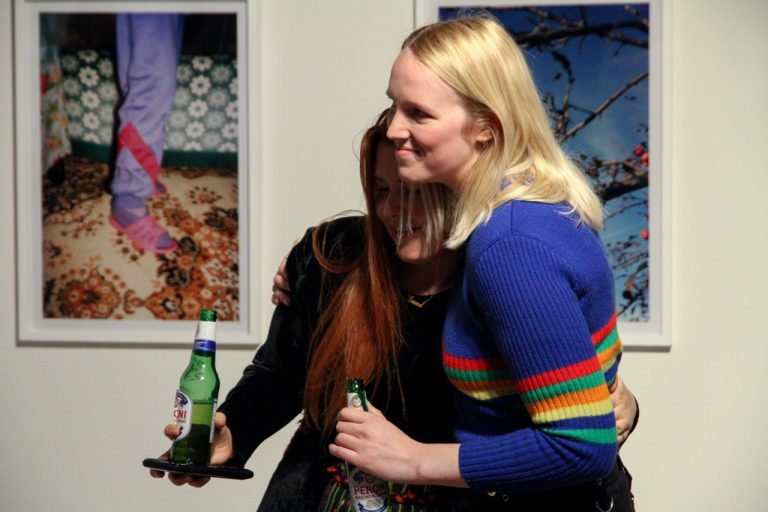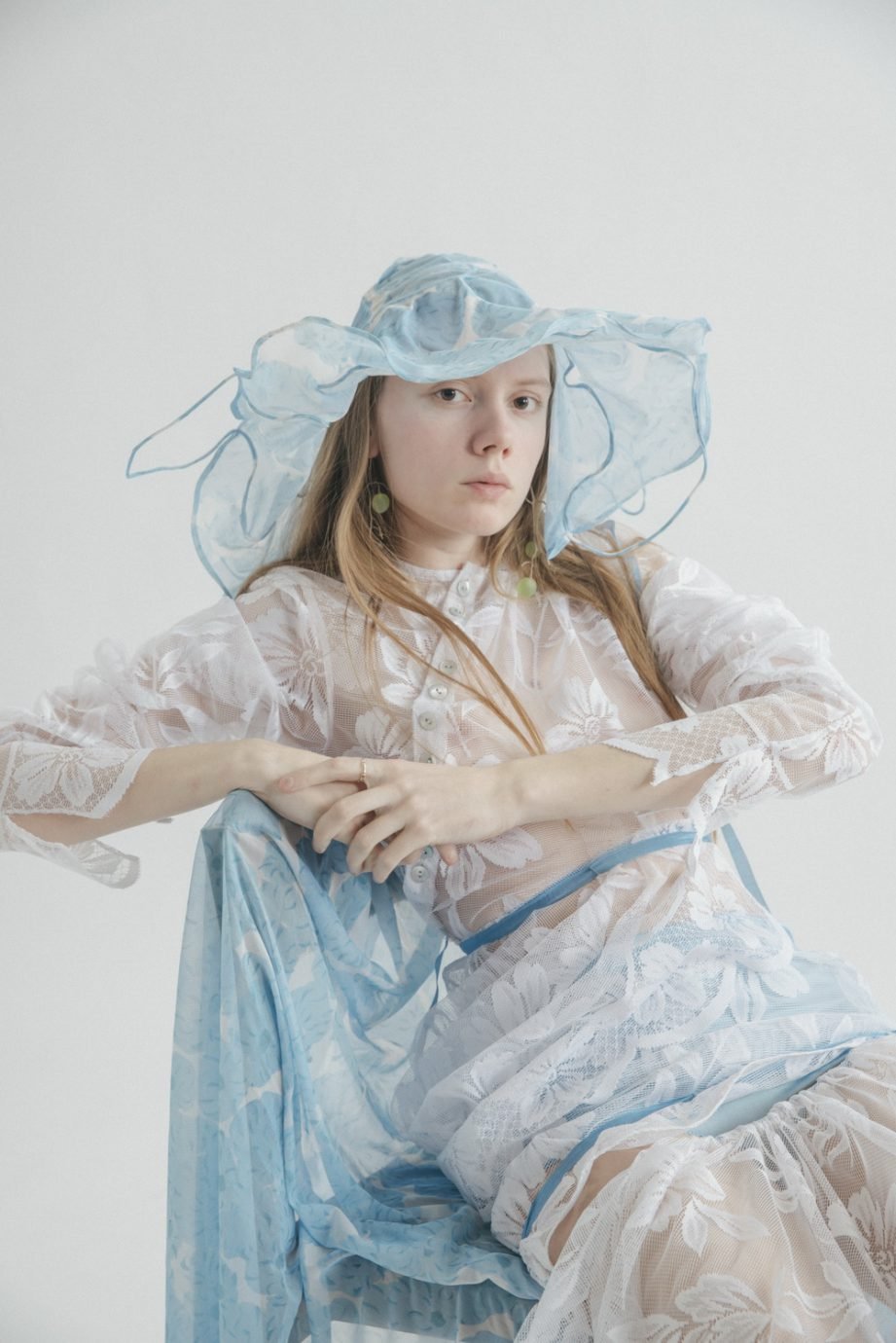Rebecca’s MA collection was fuelled by her fascination with creating value and significance out of seemingly mundane and unremarkable things, repositioning them satirically as a means of commenting on elements of strangeness not only identifiable within the objects themselves, but also within the inherent and subconscious gendering of everything around us. “The collection developed through a constant exploration of the semiotics of the ‘feminine’, challenging the idea of femininity in all its guises; exploring the gendering of words, symbols and objects; singling out all that is typically and intrinsically feminine.”
Curious about this lending of gender to existing material objects, Rebecca worked to incorporate aspects such as the kiss-clasp of a lady’s purse, the wet-satin silk of knickers, hair clips, fishnet stockings, a man’s leather belt, a black leather watch and a pocket square handkerchief. Through an interaction with commonplace linguistic expressions, the designer creates physical embodiments of these turns of phrase, integrating them into her designs as quirky, symbolic commentaries on a world of language that we are so embedded within that we rarely pause to contemplate the deeper connotations that exist inside of it. Rebecca’s ‘Knickers in a twist’ dress exemplifies this notion; at first glance, the dress possibly strikes one as avant-garde bridal wear – virginal and simultaneously sexual – yet is really a cluster of ivory silk knickers (collaged and sewn together entirely by hand), a direct, satirical play on this gendered metaphor.



























